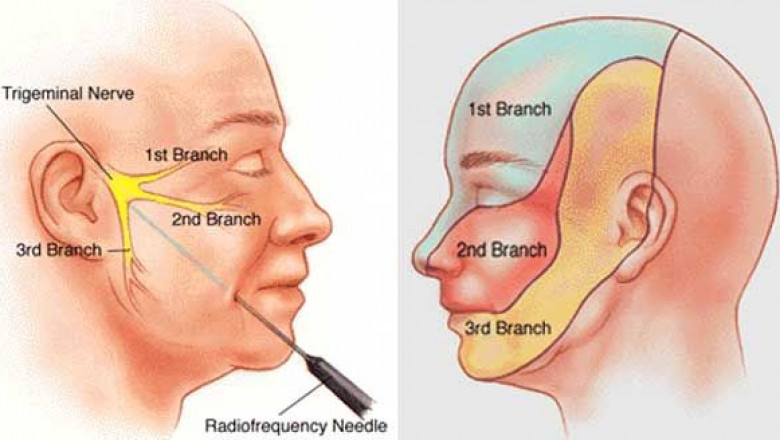views
Causes of Neuralgia
Neuralgia is caused by damage or dysfunction of nerves. There are a few common causes:
Shingles is a viral infection that frequently leads to postherpetic neuralgia (PHN) after the shingles rash heals. The virus that causes chickenpox lies dormant in nerve cells and can reactivate later in life to cause shingles. In PHN, pain signals continue to be sent along damaged nerve pathways long after the rash is gone.
Trauma or compression of nerves frequently leads to persistent pain such as trigeminal Neuralgia Treatment (TN). TN is caused by compression of the trigeminal nerve, which carries sensation from the face to the brain. Even light stimuli like brushing teeth or washing the face can trigger excruciating pain.
Some neuralgias are caused by arterial compression of nerves at their roots near the spine. This includes sporadic TN and glossopharyngeal neuralgia (GPN), which affects the nerve carrying sensation from the tongue and throat. Continuous pulsating compression causes abnormal firing of pain signals.
Diagnosis and Tests
When a patient reports severe nerve pain, a thorough physical exam and neurological evaluation can help pinpoint the affected nerve. Imaging tests like MRI are useful to identify structural causes of nerve damage or compression.
Blood tests may rule out underlying autoimmune disorders or infections that can secondarily damage nerves. Genetic testing may be warranted in familial neuralgias.
A diagnostic local anesthetic nerve block helps confirm the diagnosis by temporarily numbing the affected nerve. If it reproducibly stops the pain, it confirms the diagnosis and nerve location.
Lifestyle and Self-Management
Certain lifestyle changes aimed at managing triggers and reducing stress on affected nerves can help control neuralgia symptoms:
- Getting enough rest helps the body cope with pain. Pacing activities to avoid fatigue is important.
- Applying ice packs or soothing creams to painful areas temporarily reduces nerve sensitivity.
- Learning stress-reducing activities like relaxation exercises, meditation, or yoga can help modulate pain perception.
- Keeping oral hygiene and facial routines gentle prevents trauma to nerves supplying the face and mouth.
- Avoiding throat clearing or talking loudly helps if glossopharyngeal or vagus nerves are involved.
Medication Options
While there is no cure, appropriate medication provides effective relief for many with neuralgia. Options depend on the cause and severity:
- Anti-seizure drugs like carbamazepine, gabapentin, pregabalin, and lacosamide work by stabilizing nerve membranes and blocking sodium channels—stopping abnormal pain signals. They are first-line options for TN and PHN.
- Tricyclic antidepressants like amitriptyline and nortriptyline can enhance pain-blocking neurotransmitters in the brain and spinal cord.
- Steroids like prednisone are sometimes used short-term when neuralgia is likely associated with inflammation. Long-term use risks side effects.
- Lidocaine patches provide localized numbing for PHN or other superficial neuralgias.
- Strong opioids like morphine are reserved for very severe, refractory cases since they carry misuse risks and side effects.
Procedural Treatments
When medications fail to control symptoms or cause intolerable side effects, procedural treatments offer alternatives:
- Percutaneous radiofrequency rhizotomy uses direct heat to permanently destroy small portions of affected nerve roots. It provides years of relief in 70-90% of TN cases.
- Microvascular decompression surgically moves offending blood vessels compressing nerve roots to prevent recurrent TN symptoms. It has over 90% long-term success rates but requires brain surgery.
- Sphenopalatine ganglion block uses local anesthetics injected at the ganglion to interrupt pain transmission for facial neuralgias like TN and GPN. Temporary but repeatable relief is provided.
- Dorsal root ganglion stimulation or trigeminal ganglion balloon compression are newer minimally-invasive options that electrically or mechanically modulate nerve transmission for certain forms of neuralgia.
The right multidisciplinary treatment plan that combines lifestyle changes, medications, and interventional procedures where needed provides the best quality of life outcome for most neuralgia patients. Persistence and patience are key to finding an individualized approach that controls pain from damaged nerves.
Get this Report in Japanese Language:
Get this Report in Korean Language:
About Author:
Money Singh is a seasoned content writer with over four years of experience in the market research sector. Her expertise spans various industries, including food and beverages, biotechnology, chemical and materials, defense and aerospace, consumer goods, etc. (https://www.linkedin.com/in/money-singh-590844163)






















Comments
0 comment